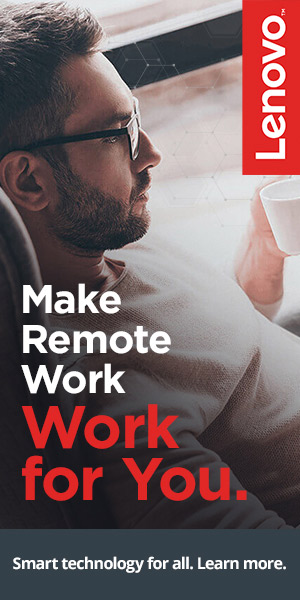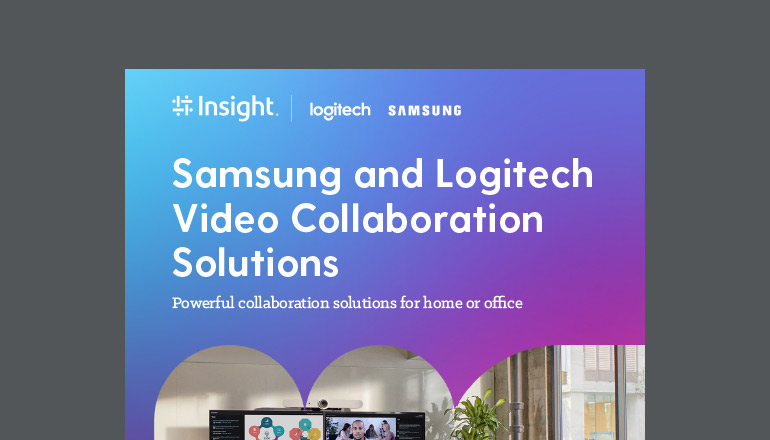Article Hybrid IT Partnerships — Critical to Business Continuity
By Dan Schneider / 18 Jun 2020 / Topics: IT optimization As a service Modern workplace Hybrid workforce

In a time when business continuity is being stress-tested like never before, some organizations are finding that a new kind of IT partnership is making all the difference.
2020 has brought major shifts to the workplace at a speed no one could have fathomed even just a few months ago. According to a recent Gallup report, 62% of U.S. workers are now engaging in remote work. That number has doubled since early March, when only 31% of employees reported working from home.
Prior to 2020, many companies were already experimenting with remote work, but few were willing to fully embrace the trend due either to perceived technology limitations or the fear of decreased employee productivity. In fact, just two years ago, 44% of companies around the world didn’t allow remote work at all. Now, most companies have been forced to adopt remote work in a way they never expected — and on incredibly short notice.
Lessons learned in the move to remote work
When businesses were required to close physical offices and send employees home to work, it quickly became apparent which companies were prepared and which weren’t. Organizations everywhere faced a number of challenges, including a shortage of laptops, lack of a scalable virtual desktop environment, inaccessible company networks, questions around security and a shortage of end-user support resources.
This set of challenges put even the most robust business continuity plans to the test. From what I’ve seen, the companies that fared best were those that were able to scale resources on demand via IT service partnerships. Having extra resources available allowed these organizations to move fast and adapt when the unexpected happened. Companies that relied solely on insourced IT lacked the resources and skills needed to scale quickly and address new IT concerns.
The situation highlighted how valuable supplemental IT services can be when it comes to business continuity. It also initiated a turning point in how organizations are thinking about IT services. Now, I believe we’ll see business leaders shifting away from insourcing and traditional IT outsourcing in favor of something new — hybrid IT partnerships.
In a recent poll, 59% of U.S. workers say they would prefer to continue working remotely as much as possible even after business restrictions are lifted.
How hybrid IT partnerships differ from traditional IT outsourcing
For years, IT outsourcing meant that a service provider would staff positions in your company to fill a need the business couldn’t meet itself. While this method didn’t necessarily save on costs, it helped companies address skill gaps in their workforce and reduce the burden of employee management.
The dialogue around hybrid IT delivery came about because, with traditional outsourcing, there was an expectation that certain walls existed between the business and the service provider. Though they may have been working towards a common goal, they weren’t necessarily part of the same team.
When you look at the state of IT today and the progress the industry is making towards digital transformation, competitive advantage really hinges on teamwork and scalability. Hybrid IT partnerships ensure greater unity and teamwork by blending the business and the service provider. The service provider becomes part of the organization’s IT team, delivering scalable, managed services from within the business.
To be successful, I think modern businesses will need a cohesive IT strategy, combined with the ability to scale resources up or down when necessary. Hybrid IT partnerships can deliver this flexibility, as well as the expertise and guidance to help businesses run smarter. With greater engagement between the two IT organizations, hybrid partnerships move beyond the classic vendor/client relationship, allowing the service provider to become a true partner in the client’s success.
Spring for the right partner, not just the lowest bid.
As companies start returning to business as usual, many will need the help of a hybrid IT partner to adopt new ways of working and provide the support employees need in this new environment. Given the current financial climate, many companies will be tempted to issue a Request For Proposal (RFP) and simply select the lowest bidder. However, this type of thinking doesn’t bode well for the future of the business.
While one vendor may offer the lowest price now, they may not be able to provide the innovation and support your company will need for the future. Also, the lower cost often comes at the expense of human interaction — low-cost service providers keep costs down by relying on bots and taking human connection out of the equation.
Especially now, people want a strong customer experience. I think Insight excels in this space because of how we behave toward our clients and the personalized support we deliver. The human quotient is much stronger here and I think that tends to get lost in the dialogue around cost and technology.
So, if I can just advise you today, don’t base your decision on cost alone. Instead, I urge you to look for a long-term partner who can assist with finding smart ways to reduce the cost of operations now, while positioning your business to thrive in the future. Because it’s a journey, right? It’s going to take time to get there as your company has to transform and use capital smarter and do business smarter.
Look for a long-term partner who can assist with finding smart ways to reduce the cost of operations now, while positioning your business to thrive in the future.
Now’s the perfect time to get back to basics.
Not every business is as forward-thinking as we’d like to believe. Most of our clients still have very basic problems they’re trying to solve, often stemming from legacy technologies. Organizations still need help stepping into the future — right now, they just need to get the basics right.
In today’s financial climate, no one is projecting an increase in IT budgets or working capital. That means digital innovation projects could be put on the backburner for a short time — however, no business can afford to delay innovation for long. Companies need a hybrid IT partner who can be tactical and scrappy enough to get them through the current situation, but also strategic enough to stair-step the business into the future later.
What I’m telling clients is this: let’s get the basics right now to increase efficiencies today and lay the foundation for tomorrow’s digital transformation. This is achievable right now and it represents low-hanging fruit for nearly every client I talk to. By just doing the basics right, we can be more efficient, eliminate steps and move faster to positively impact cost structure and improve user experiences.




















